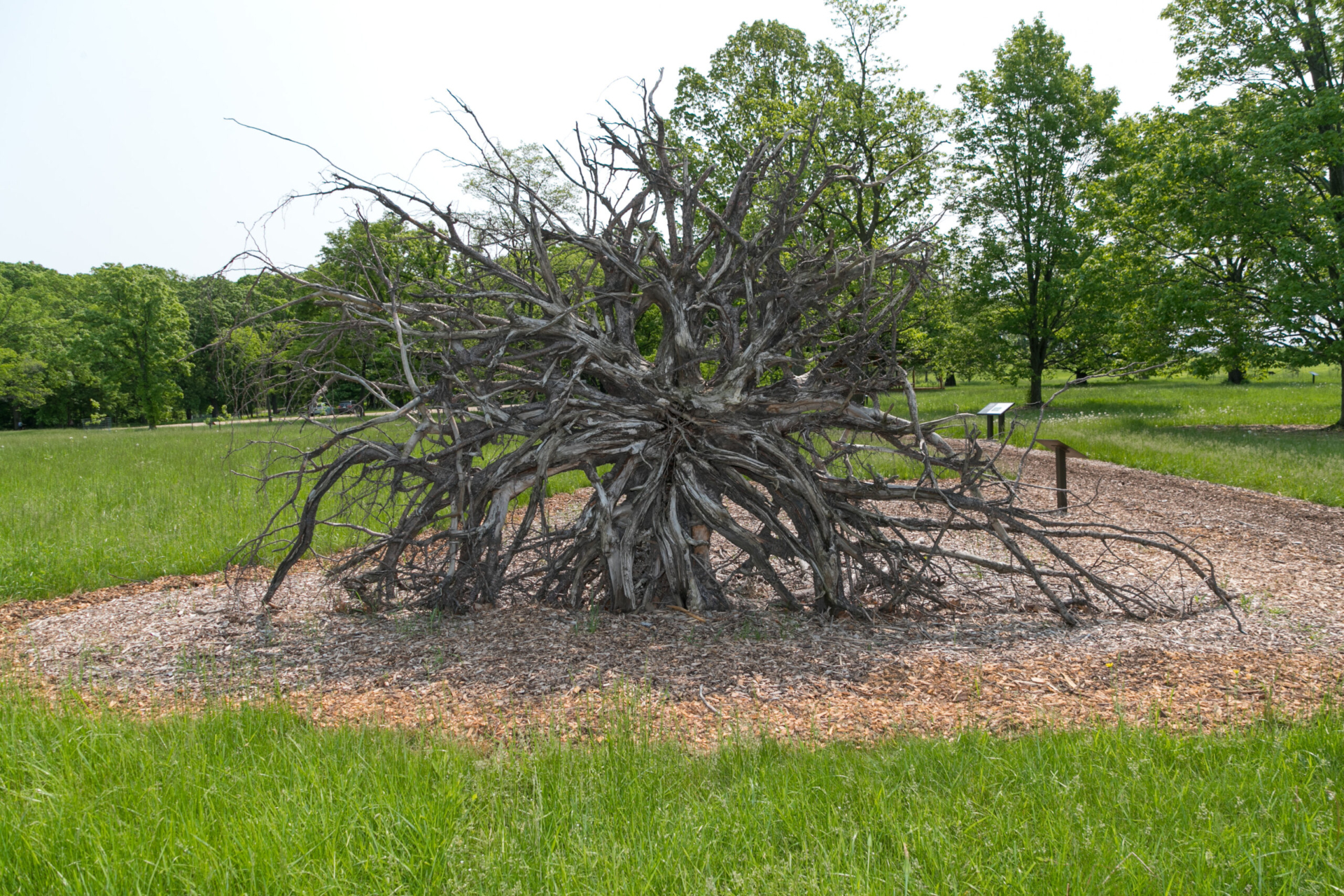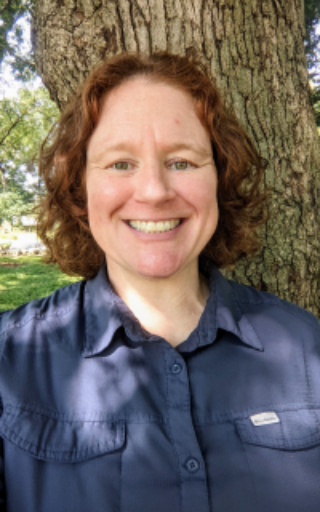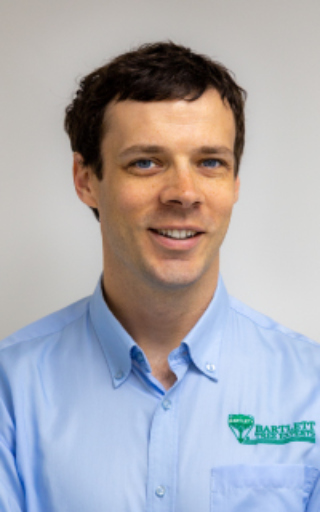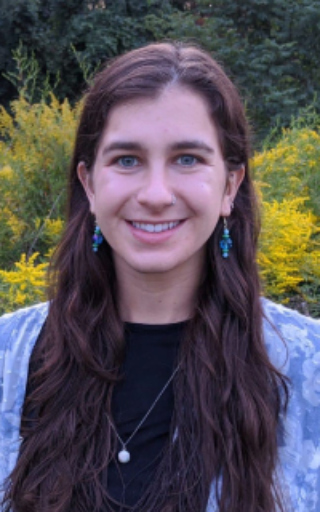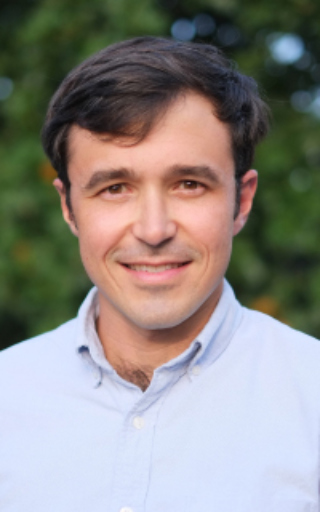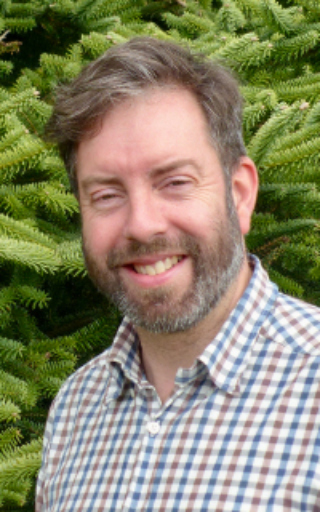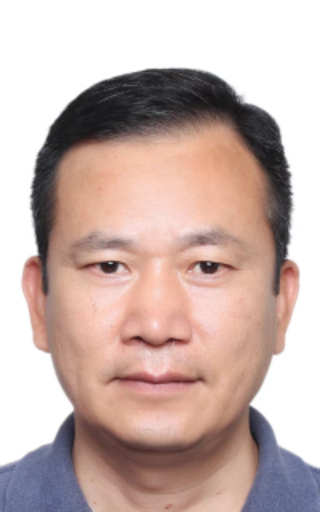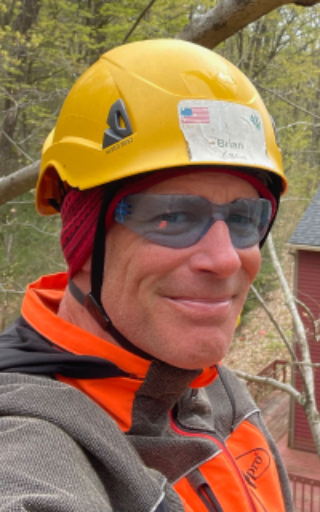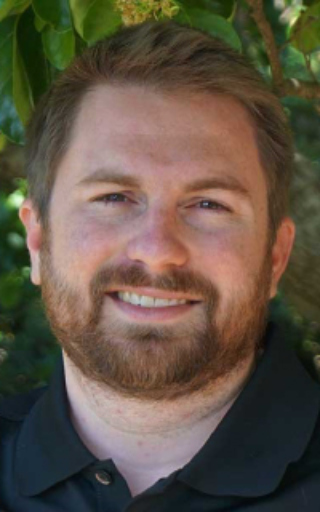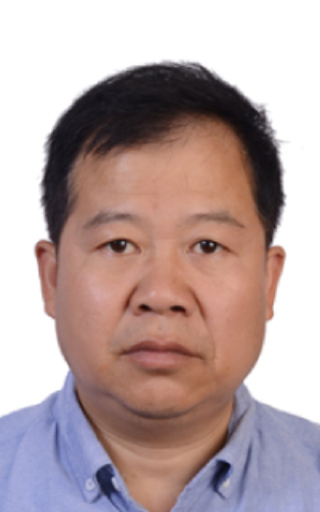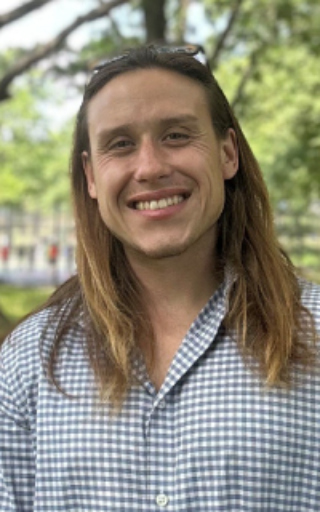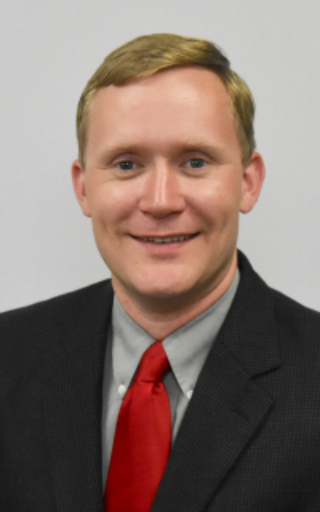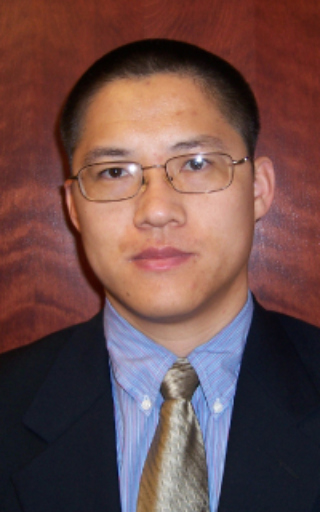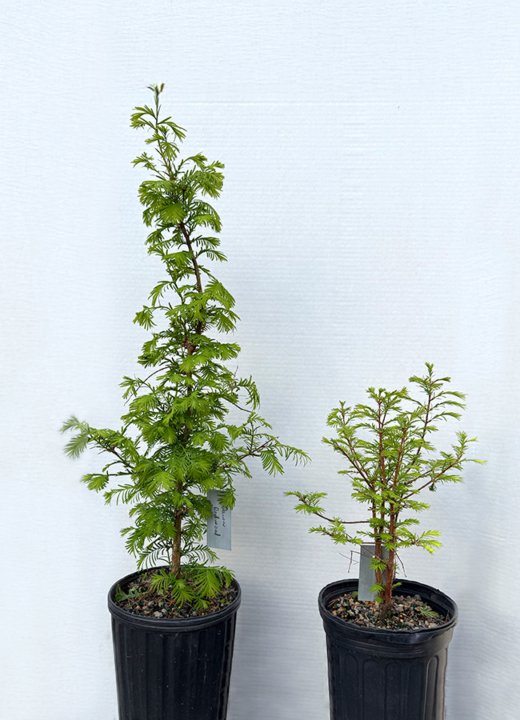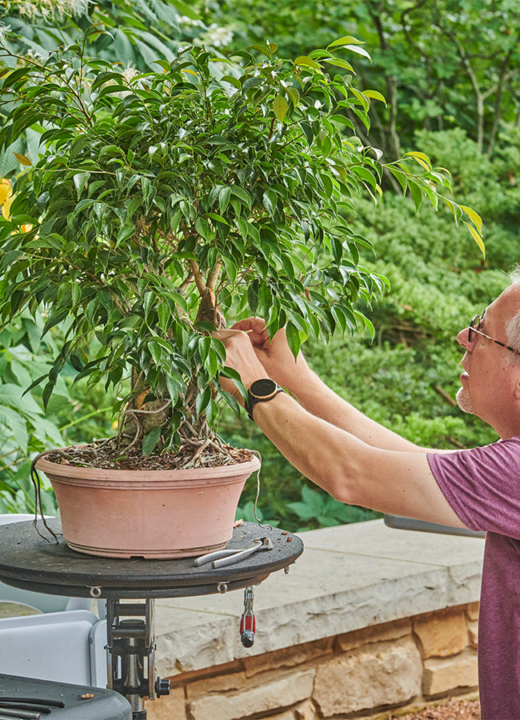In this international conference on tree root development in urban soils, learn about the latest science-based management strategies for establishing and maintaining trees’ roots in challenging urban situations. Top scientists and practitioners from around the world will present knowledge to help managers and policymakers choose, plant, and care for healthier, longer-lived trees by focusing on trees’ critical and vulnerable root systems. Speakers will address such topics as the design and constraints of street planting spaces, nursery growing, soil selection and amendment, tree root architecture, and tree stability. Landscape Below Ground V is presented in partnership by The Morton Arboretum and the International Society of Arboriculture.
Preconference Workshops
Tuesday, October 10, 2023
8:30 a.m. to 4:00 p.m.
The Morton Arboretum, Lisle, IL, USA
View preconference workshop schedule >
Conference Sessions
Wednesday, October 11, 2023 and Thursday, October 12, 2023
8:00 a.m. to 5:00 p.m.
The Morton Arboretum, Lisle, IL, USA
View conference workshop schedule >
Please note: in-person registration closes Sunday, October 8, 2023.
Conference hotel: See Hotel Information for registration details.
ISA Continuing Education Units: This conference program allows attendees to earn Certified Arborist continuing education units (CEUs) by participating in-person at workshops or by attending presentations in-person or virtually. To be eligible to receive CEUs, you must be a current ISA credential holder and you must attend the session in its entirety. If you have any questions about CEUs, please contact landscapebelowground@mortonarb.org.
Speakers: The keynote speakers will be Gary Watson (US), Allessio Fini (Italy), Els Couenberg (Netherlands), and Mike Arnold (US).
Interested in conference updates while you decide whether you are ready to register? Email landscapebelowground@mortonarb.org to be added to the conference mailing list.
Age: 16 and older
Course number: S418
This conference would not be possible without the generous support of our sponsors.
Premier Sponsors


Platinum Sponsors


Gold Sponsors


Supporting Sponsors
Illinois Landscape Contractors Association (ILCA)
Illinois Green Industry Association (IGIA)
DeepRoot Green Infrastructure, LLC
Illinois Arborist Association
Michael Arnold is a professor at Texas A&M University and director of The Gardens at Texas A&M University. He holds a BS in business administration, a BS in horticulture, and an MS in horticulture from The Ohio State University, as well as a PhD in horticulture from North Carolina State University. He spent a brief time at Tennessee Tech University before going on to serve at Texas A&M University for over 30 years. He worked in landscape establishment and new plant development throughout his career. Arnold is a Fellow of ASHS and has served as president and chair of the board of directors for the American Society for Horticultural Science, as well as president of its Southern Region. He spent 15 years in administrative roles in the Texas A&M department of horticultural sciences. He has published 100 peer-reviewed journal articles, numerous popular press articles, presented over 200 regional, national, and international talks, and he is the author of four textbooks.
Els Couenberg has earned a BS and an MS in biology at the University of Amsterdam. She has worked in municipal arboriculture since 1986, first for the city of Amsterdam, then since 1998 as an independent consultant. From 1994 to 2006 she worked as a guest researcher at Wageningen University Research Centre (WUR). She was part of EU-COST action E12 and co-authored the chapter, “The Abiotic Urban Environment: Impact of Urban Growing Conditions on Urban Vegetation,” of the book Urban Forests and Trees (2005). Her specialty is the interaction between tree roots and soils. This is the fourth Landscape Below Ground conference she has attended.
Alessio Fini is a professor of arboriculture at the department of agricultural and environmental sciences – production, landscape, bioenergy of the University of Milan. His research projects include sustainable cultivation techniques for nursery production and urban forestry and stress tolerance of urban trees. In 2006 he became a member of ISA and, since 2010, he is the representative for Europe in the ISA Membership Committee. In 2014, he was awarded with the Early Career Scientist Award by the International Society of Arboriculture. He is vice president of the Arboricultural Research and Education Academy (2016–2017). He is associate editor of Urban Forestry and Urban Greening, and he is currently editor of the Routledge Handbook of Urban Forestry and of the special issue “Plant Response to Novel Environmental Pressures” for Frontiers in Plant Science. He is author of more than 120 publications in international peer-reviewed journals, book chapters, conference proceedings, and national journals.
Gary Watson joined The Morton Arboretum research staff in 1986, retired in 2020, and is currently a lead scientist emeritus. He earned his BS and MS degrees in biology at Western Illinois University, and PhD at the University of Illinois in plant pathology focusing on noninfectious disease problems of tree roots. Research project topics included improving success in planting landscape trees, root system development of trees subject to nursery practices, benefits of mulching as a substitute for natural litter recycling forests, consequences of construction disturbance on root systems. His accomplishments have been recognized with Award for Arboricultural Research and Richard W. Harris Author’s Citation Award from the International Society of Arboriculture. He is a past president of ISA, the Arboricultural Research and Education Academy, and the Illinois Arborist Association. He is the author of The Practical Science of Planting Trees, organizer of four Landscape Below Ground Conferences, and editor of the conference proceedings.
Stephanie Adams is a tree pathologist and an ISA board-certified master arborist who serves as the plant health care leader at The Morton Arboretum and as research director for the Illinois Arborist Association. She has been involved in the tree care industry for 22 years. She enjoys performing clinical plant disease diagnosis, conducting research on tree diseases and other plant health issues, and delivering these findings to green industry professionals.
Marie Ambusk retired from GE Healthcare (IDX) after a 40-year finance career. She was inspired to fix a global problem that causes unnecessary failure of young trees: root collar disorder. Since then, she has studied how trees grow; why they die; and what we could do to influence their ability to grow to maturity. She became a certified Master Gardener (2006); became a certified VT SOUL Tree Steward (2007), and started TREEage, a volunteer outreach project with the mission to “promote best maintenance practices for urban trees.” While she remains the project leader today, her ongoing research has developed into a full-time commitment, strengthened her purpose, and ultimately led to an innovative method to use noninvasive Ground Penetrating Radar to help solve the problem. She started TreesROI™ in 2012 believing that “any problem can be solved with science, technology, persistence, a lot of hard work, and a little luck.”
Jon Banks is the research lab manager for the UK Research and Diagnostic Laboratory. He has been involved in Bartlett research and diagnostics at the University of Reading since 2010. His applied research focuses on tree health, how we can measure it, improve it, and adapt it to help us with pest and disease management. He is chair of the Research Advisory Committee for the charity Fund4Trees. He has presented his research at numerous conferences including the International Society of Arboriculture (ISA) (2020), ISA Hong Kong chapter (2019), Arboricultural Association annual conference (2019), International Urban Tree Diversity Conference in Alnarp, Sweden, and a keynote address at the 2018 Myerscough research conference. His PhD assessed drought and variations in drought tolerance within the Acer genus in 2019. In addition to research, his role also includes keeping Bartlett representatives informed and updated of recent developments in tree pests and diseases, management, and maintenance.
Jim Barborinas, as president and founder of Urban Forestry Services, Inc., over 30 years ago (now acquired by Bartlett Tree Experts as Urban Forestry Services | Bartlett Consulting), has worked throughout the Puget Sound region, with communities, landscape architects, engineers, developers, and private citizens on many urban forest issues. For 25 years, he and his wife, Annie, also run Urban Forest Nursery, Inc., a 32-acre wholesale tree nursery, in the Skagit Valley in Washington State, specializing in growing high-quality street and landscape trees grown in-ground in fabric grow bags. Trees are specifically selected and grown for characteristics that complement the limited planting spaces and adverse conditions typical of urban planting sites today. From his knowledge of growing trees, he is particularly adamant about root development, soil preparation, and proper tree selection. From his consulting and nursery experience, he believes grow bags deserve more attention.
Claudia Bashian-Victoroff is a forest ecologist focused on connections between soil fungi and tree health. Her research couples field collections with modern molecular identification methods to investigate ectomycorrhizal species diversity and function. As a researcher in David Burke’s lab at the Holden Arboretum, she focuses on the role of soil fungi in urban canopy restoration in Cleveland, Ohio. Trees growing in urbanized environments are subject to pressures such as habitat fragmentation, exposure to heavy metals, and soil compaction. Mycorrhizal fungi can enhance plant growth, disease resistance, and drought tolerance; therefore, it is necessary that we establish a better understanding of how these fungi might improve outcomes of urban restoration efforts. Beyond this, she enjoys discussing the importance of fungal research and conservation with diverse audiences through teaching, writing, and mentorship.
Andrew Benson is a practicing consultant arborist in Auckland, New Zealand. He has a particular interest in how trees interact with urban environments and has a research background that focuses on integrating trees with urban sites and human activity as harmoniously as possible.
Daniel Burcham is an assistant professor of arboriculture and urban forestry at Colorado State University in Fort Collins, Colorado. He is interested in the persistence and preservation of large, mature trees facing multiple disturbances in cities, and he studies the natural adaptations and management interventions conferring longevity to individual trees and, at broader scales, limiting mortality rates in urban forests. He earned a PhD in environmental conservation with an emphasis in forest resources and arboriculture, from the University of Massachusetts Amherst, and he earlier obtained a BS in landscape horticulture and an MS in public horticulture from The Ohio State University and the University of Delaware, respectively. For nearly 10 years, he managed an arboriculture research program at the Centre for Urban Greenery and Ecology, National Parks Board (NParks), Singapore, where he contributed to advancements in tropical arboriculture.
Josh Caplan is an environmental biologist who studies plant and soil dynamics in human-modified settings. With most of his work, he seeks to understand how plants and soils respond to environmental extremes (for example, in salinity, soil moisture, and nutrients). Often, he is interested in determining how their responses affect larger-scale processes such as water fluxes, carbon cycling, and plant invasion. Some of his research also investigates ways that plants themselves alter soil and how engineered soil media could be modified to be more effective or sustainable. His fieldwork takes place in a variety of human-shaped settings, such as urban roadsides, disturbed forests, and coastal wetlands. His research also relies on chemical and hydraulic laboratory analysis as well as computational modeling.
Bert Cregg is an associate professor of horticulture and forestry at Michigan State University. He conducts research and extension programs on physiology and management of trees in nurseries, landscapes, and urban and community forests. He holds a doctorate in forest resources from the University of Georgia, and he was a researcher for the USDA Forest Service and forest industry before joining MSU. He has published over 200 articles on trees and tree care in scientific journals, magazines, and extension publications.
Christopher Fields-Johnson, PhD, attended Virginia Tech, graduated summa cum laude in forestry, and earned an MS and a PhD in crop and soil environmental sciences while studying land reclamation, reforestation, and the use of biochar in soil rehabilitation. He is the tree conservation specialist for the Davey Institute of the Davey Tree Expert Company, providing scientific support across the United States and Canada on the topics of plant health care, green waste recycling, and managing plant-soil-water relationships. He lives with his wife and two children in Charlottesville, Virginia, where they enjoy hiking, kayaking, and cycling in the Blue Ridge Mountains.
Jason Grabosky is a professor serving as the John and Eleanor Kuser Faculty Scholar in urban and community forestry at Rutgers, The State University of New Jersey in the School for Environmental and Biological Sciences within the ecology, evolution and natural resources program. He is also with the extension specialist team for the New Jersey Agricultural Research Station. He teaches courses in forestry and maintains research efforts broadly centered on urban trees and their management.
Angelina Harley is a senior genetics major at Clemson University in South Carolina. While at The Morton Arboretum, she studied the defense response of Eastern white pine roots. Currently, she is working on a paper reporting her summer findings. She is also a researcher in the Center for Nanotherapeutic Strategies in the Central Nervous System at Clemson University.
Andrew Hirons is a senior lecturer in arboriculture and the research lead for plant sciences at University Centre Myerscough, UK. His teaching focuses on tree biology, tree establishment, and tree management. He is interested in the application of science to practice; making sure that arboricultural management is evidence-based wherever possible. He co-authored Applied Tree Biology (Wiley-Blackwell) to support others in understanding tree biology and how it relates to managing trees in urban environments. Hiron’s research focuses on developing resilience in our urban forests through a better understanding of species selection. He has published his research in a number of peer-review publications as well as professional guidance entitled Tree Species Selection for Green Infrastructure: A Guide for Specifiers, published by Trees and Design Action Group (TDAG). A major research focus is around the use of internet of things (IoT) sensors to monitor tree growth and water use in a range of treescapes from nurseries to ancient woodland.
Thibaut Houette is a French architect with educational and professional experience in parametric design, sustainability, and biomimicry at scales ranging from material to ecosystem. Following a research path focusing on biomimicry for architecture, he earned an integrated bioscience PhD at The University of Akron, Ohio, focusing on ways to implement biological growth into architecture through biotechnology (mycelium-based materials) and biomimicry (design of root-inspired building foundations).
Yonghong Hu is currently the executive director at Shanghai Chenshan Botanical Garden, Shanghai, China. He received his PhD in landscape architecture from Beijing Forestry University in 1997. He is the chairman of the International Association of Botanic Gardens’ Asian Branch (IABG). He has long engaged in the research of urban phytoecology and is committed to using plants to improve the microenvironment of cities, so that urban dwellers have more opportunities to get close to nature. He is the author of Solutions to Urban Greening in the Built Environment (2012–2019), covering greening technologies for roofs, walls, roads, and squares that can be used for urban ecological renewal.
Brian Kane, PhD is the Massachusetts Arborists Association professor of arboriculture at the University of Massachusetts–Amherst. He is an ISA Certified Arborist who began dragging brush in 1988. He has written many scholarly and trade articles and given presentations all over the world on the mechanical aspects of tree work. He is currently finishing his term as the ISA alternate rep on the ANSI Z133 committee.
Andrew Koeser is an associate professor of urban tree and landscape management at the University of Florida Gulf Coast Research and Education Center near Tampa, Florida. He has an active research program focused on the effects of storms and construction on tree health and stability. He earned his PhD and MS from the University of Illinois and his BS from the University of Wisconsin–Stevens Point. He is the father of four daughters and enjoys biking and practicing martial arts when not researching trees.
Tim Johnson’s trade, technical, and research background in horticulture, biodiversity, and civil engineering, in local government, private sector, and academe, equips him to seek and to apply interdisciplinary knowledge. His doctoral research identified synergies between trees, stormwater, soil, and civil infrastructure that can be applied to improve urban environments and reduce problems that arise commonly between trees and built assets. As an adjunct researcher with the University of South Australia-STEM and Flinders University, he conducts research at the interface of horticulture and civil engineering to investigate nature-based solutions to urban problems. His role as director of TREENET, an independent, nonprofit, urban tree research and education organization, links him to local governments and other agencies nationally where he is able to support field-based research and mainstreaming of findings.
Riley Johnson is an ISA Certified Arborist with Tree Risk Assessment Qualification and a research technician in the department of horticulture at Michigan State University. She earned her BS in natural resources management from Grand Valley State University and MS in horticulture from Michigan State. In her current role, she works with Bert Cregg, PhD, to conduct field research and extension efforts related to landscape tree establishment and Christmas tree production.
Albert Key has been involved in the green industry for 30 years as an owner of DeepRoot Green Infrastructure, LLC. Together with his partners, he co-invented the SilvaCell® and has received several patents for his inventions that address trees and stormwater management in the urban setting. He has written for a wide range of publications, including the Journal of Arboriculture and Civil Engineering News. He has been instrumental on projects such as Martin Luther King Memorial in Washington, DC, South Temple Square in Salt Lake City, The LINQ Promenade in Las Vegas, Nevada, Lincoln Center in New York City, Metropolitan Museum of Art in New York City, the US Tennis Association’s Billie Jean King Tennis Center in New York City, and Massachusetts Institute of Technology’s SOMA Center at Kendall Square in Cambridge, Massachusetts. Key is a former board member of TreesNY, a Bronze Level Sponsor of the American Chestnut Foundation, a forestry committee member of the Wantastiquet Trout Club, and an affiliate member of the American Society of Civil Engineers (ASCE).
Luke McCormack is a scientist at The Morton Arboretum where he has directed research in the root biology lab since 2019. Before joining The Morton Arboretum, he studied forest ecology at The Pennsylvania State University and was later a research associate at the University of Minnesota-Twin Cities and the Chinese Academy of Sciences. His work focuses on how roots interact with soils and whole-plant processes to create healthy trees in complex ecosystems.
Meghan Midgley is the soil ecologist at The Morton Arboretum in Lisle, Illinois. She studies how interactions among plants, microbes, and soil influence ecosystem responses to environmental changes, including ecosystem restoration and management activities. Midgley seeks to build bridges between research and practice by using scientific insights into soil biology to design and enhance effective ecosystem management strategies in both natural and urban forests. Currently, she is assessing the effects of several soil amendments on tree survival, growth, and health in roadside soils; the efficacy of using biochar to mitigate salt effects on trees and water; and the impacts of planting strategies on soil ecosystem services. She is a soil enthusiast, and hopes to inspire others to appreciate the role of the belowground environment in meeting aboveground goals.
Jason “Jake” Miesbauer, PhD is an arboriculture scientist at The Morton Arboretum in Lisle, Illinois. His research focuses on tree pruning, tree biomechanics, and tree risk management. Prior to pursuing a career as a scientist, he spent several years in the tree care profession as a practicing arborist, gaining insight and experience that continues to drive and inform his research. He is a past-president of the Illinois Arborist Association, and currently serves as secretary and treasurer for the Arboriculture Research and Education Academy (AREA).
Michiel Mol was an arborist at the Nationale Bomenbank in 1999, one of the leading Dutch companies in arboriculture. He began as a consultant In 2006 and studied garden and landscape architecture at Van Hall Larenstein, University of Applied Sciences. In 2013, he started at Terra Nostra, a knowledge center for trees and soil. Current research includes studying tree effect analysis in urban renewal projects, tree appraisal, solutions for suffering trees in bad planting pits, designing planting pits on roofs, and highly disturbed soils. He is a huge fan of mapping root systems by using GPR, which gives information about the root system and reduces digging trenches. Further, he participates in practical research projects, such as how to improve structural soils, how to improve urban soils with natural products and solutions to easily monitor soil fertility. His mission is to further increase the knowledge of our team and to improve the resulting products.
Kristin Moldestad is an ISA-certified and TRAQqualified arborist. She is working as a consulting arborist in Oslo, Norway, at COWI AS and a part-time teacher at a technical college in Norway. She has been in the arboriculture industry for about 20 years. She is often out on building and infrastructure construction sites to ensure that the correct procedures are followed on-site to protect existing trees. She collaborates with architects and landscape architects to find good solutions for preserving trees. Over the last three years she has dedicated herself to studying roots.
Ryan Munroe is a horticultural advisor and leads the plant health team at NVK Nurseries, which is focused on supporting the nurseries’ growers in enhancing integrated pest management, soil health, irrigation quality and efficiency, weed management, and overall plant quality. He has over a decade of experience in the forestry, nursery, and landscape fields, beginning with summer jobs as a tree planter in northern Ontario. He was a landscaper in Newfoundland, and he held ecology and horticulture research assistant positions in Quebec, Ontario, and Nova Scotia. He was a fan of the work-travel concept in his early twenties.
He earned a Bachelor of Science and then a master’s degree in forest conservation from the University of Toronto in 2014, and he worked as a research technician at Vineland Research and Innovation Centre from 2016 to 2022, where he contributed to Landscape Ontario’s “Ontario Landscape Tree Planting Guide.” At Vineland he worked collaboratively with a wide variety of nursery and landscape companies and organizations toward the shared goal of improving transplant success in nursery fields and in landscape settings. Much of this work was centered upon understanding the environmental tolerances of landscape plants and matching those with site characteristics, including soil properties, as well as improving tree root quality throughout the nursery production cycle.
Kelsey Patrick is a research aide in The Morton Arboretum’s root biology lab. She will be working toward her PhD in the University of Illinois at Chicago’s department of ecology and evolution beginning this fall. Her broad interests are in belowground ecology, and her graduate research will focus on mycorrhizal functional traits and their impacts on ecosystem processes. She also devotes time to other ongoing root lab studies, specifically fine-root responses to waterlogging and root imaging in the monospecific forestry plots at The Morton Arboretum.
Rosalind Remsen is a graduate student at University of Wisconsin–Stevens Point pursuing a master of science degree in natural resources in the soil science discipline. Before beginning graduate school, she worked as an arborist for Davey Tree Expert Co. in the Chicago suburbs. Her thesis research investigates the site and soil characteristics that may be driving a widespread pattern of white oak decline in the Chicago region. The results of this research also support collaborators at The Morton Arboretum, who are studying Phytophthora root rot’s potential role in oak decline. She hopes this research will contribute to the arboricultural field by providing information and insight about oak decline that may help inform management and planting decisions.
During his academic career Chad Rigsby studied the interactions between invasive forest pests and their novel host plants. He then joined the Bartlett Tree Research Laboratories team in 2018 and is based out of The Morton Arboretum. His research focuses on a variety of topics centered on trees and their management including pruning, soil, root, and pest management, tree stress, growth-defense tradeoffs, and tree planting practices. He works with Bartlett Tree Experts arborists and other groups to teach and implement best management practices and science-driven tree care.
Allyson Salisbury is an urban forestry scientist who studies how to help trees and other plants grow better in urban environments. She currently uses her data analysis and scientific writing skills to support research at both the University of Florida and Temple University. She also previously conducted research at The Morton Arboretum and worked in state government and the environmental nonprofit sector. She received her PhD from Rutgers University and her bachelor’s from Susquehanna University.
Bryant Scharenbroch is an associate professor of soil science at University of Wisconsin–Stevens Point and a research fellow of the Center for Tree Science and The Morton Arboretum. He has a PhD in soil science from the University of Wisconsin– Madison, an MS in plant science from the University of Idaho, and a BS degree from University of Wisconsin–Stevens Point in urban forestry and forest management. His research interests are pedology and soil quality. He has published over fifty peer-reviewed journal articles and book chapters and presented over two hundred times at industry and scientific conferences. Scharenbroch has served as a chair of the Urban and Anthropogenic Soils Division of the Soil Science Society of America and as associate editor for Arboriculture and Urban Forestry.
Huib Sneep is a landscape architect in the Netherlands. He has worked in municipal arboriculture since 1985, starting as a manager of National Treebank. In 1990 he founded Tree Service International, one of the main suppliers of commercial arboricultural services in the Netherlands. Since 2010, he has worked as a tree consultant. He is an expert in urban tree and structural soil and has held the world record for large tree transplants since 1997. Sneep collaborates with several Dutch universities on research projects related to biodiversity and urban quays.
With over 14 years in construction, management, and preservation of natural resources, Henry Torres dedicates his time, energy, and intellect to build frameworks that guide foresters in the preservation of trees and the management of city contracts. He also provides contractors with an array of tools to succeed when working for the City of New York. He regularly consults on best practices in repairing sidewalks while preserving city trees, and he serves as expert reviewer for contract specifications, engineer estimates, and contract submittals. His deep interest in tree preservation practices and contract management also led to critically acclaimed projects at the intersection between construction, management, and preservation with a wide range of collaborators. His current position at the NYC Department of Parks and Recreation allows him to combine his extensive training in engineering and management with his passion for construction, sustainability, and preservation in a government environment.
Hongbing Wang is an associate professor in the College of Life Sciences, Shanghai Normal University. His research interests are in urban ecology, urban horticulture plant diversity, and landscape ecology, focusing on the interactions of root, shoot, and soils of urban forest trees and sustainable growth of street trees.
Matthew Werle is a senior consultant at GreenBlue Urban, where his background in green infrastructure helps create sustainable cities across the United States. His experience in low impact development and urban forestry have fostered relationships with landscape architects, civil engineers, and other related professionals across the country, facilitating his goal of educating designers, specifiers, and policy makers about the benefits of healthy urban trees. His key focus being to relay the importance of understanding the techniques that ensure the successful design, establishment, and ongoing maintenance of green and blue infrastructure, in order to reap the long-term benefits of sustainable design.
Entering his eighth year with New York City’s Department of Parks and Recreation, Wilcox has overseen a variety of large scale urban forestry programs, contracts, and in-house units. Prior to beginning his career with NYC Parks and Recreation, he completed a masters degree at The University of Nottingham in England where he specialized in ancient oak preservation, rotational land management, and deadwood habitat management within Sherwood Forest National Nature Reserve. He has a passion for preserving mature trees within the NYC urban landscape through tree work and maintenance prescriptions and design solutions when existing or proposed infrastructure presents conflict (a modern, urban Lorax of sorts….).
Ryan Winston is an assistant professor in the departments of food, agricultural, and biological engineering and civil, environmental, and geodetic engineering and a core faculty of the Sustainability Institute at Ohio State University. He leads the Ohio State University stormwater management program, which provides stormwater and stream management services and technical assistance related to urban water to federal and state agencies, local governments, and watershed groups. The goal of the program is to conduct applied research at the practice, site, and small watershed scale to help understand the cost, benefits, and ecosystem services provided by stormwater controls.Winston has led more than 50 projects focused on urban and suburban stormwater monitoring and subsequent development and calibration of models based on these data. He has particular interest in applying lessons learned in field-based research projects to inform design of new stormwater controls.
Wei Zhang holds a PhD degree in engineering from Virginia Tech. He has been doing research and development for the green industry for 10 years. His research areas include watering solutions for landscape plants, plant health, plant protection against stresses such as drought and road salt. His work also provides novel solutions to green stormwater infrastructures, for which plants are used for the treatment of pollutants in stormwater. He has written more than 40 peer-reviewed scientific journal articles, one monograph, and more than 100 conference presentations. He has been a frequent speaker on arboriculture, landscape architecture, urban forestry, stormwater green infrastructure, and at related conferences and seminars. Zhang is an ASLA approved LA CES provider. He is known as a scientist, educator, and public speaker.
Wednesday, October 11
8:00 a.m.
“Welcome to LBGV” Presenters: Jill Koski, The Morton Arboretum, United States; Caitlyn Pollihan, International Society of Arboriculture
Arbor Room
8:20 a.m.
“Thirty Years of Landscape Below Ground” Presenter: Gary Watson, The Morton Arboretum, United States
Arbor Room
8:40 a.m.
“Are Pavements a Major Cause of Tree Decline?” Presenter: Alessio Fini, University of Milan, Italy
Arbor Room
CEUs: 1.0
9:30 a.m.
Break
9:50 a.m.
“Rooting Volumes for Tree Growth in Inner Cities. How Much Do They Really Need?” Presenter: Els Couenberg, Natura Ingenium, Netherlands
Arbor Room
CEUs: 0.75
10:35 a.m.
“Trials and Tribulations Pursuing the Perfect Tree for Transplanting” Presenter: Michael A. Arnold, Texas A&M University, United States
Arbor Room
CEUs: 0.75
11:20 a.m.
Poster introductions
Noon
Lunch
1:00 p.m.
“Biochar and Urban Trees” Presenter: Bryant Scharenbroch, University of Wisconsin–Stevens Point, United States
Arbor Room
CEUs: 0.5
“Identification of Trees By Their Roots” Presenter: Kristin Moldestad, COWI AS, Norway
Founder’s Room
CEUs: 0.5
1:30 p.m.
“Soil Oxygen: The Real Limiting Factor for Urban Trees” Presenter: Wei Zhang, TreeDiaper/Zynnovation LLC, United States
Arbor Room
CEUs: 0.5
“Extracting Morphological Root Traits from Tree Root Systems through Photogrammetry and Parametric Algorithms” Presenter: Thibaut Houette, The University of Akron, United States
Founder’s Room
CEUs: 0.5
2:00 p.m.
“Biochar Effects on Roadside Trees and Soil Ecosystem Services” Presenter: Meghan Midgley, The Morton Arboretum, United States
Arbor Room
CEUs: 0.5
“Use of Modified Pipe Model to Inform Root System Appraisal” Presenter:Jason Grabosky, Rutgers University NJ Agricultural Experiment Station, United States
Founder’s Room
CEUs: 0.5
2:30 p.m.
Break, poster session
3:00 p.m.
“Simultaneous Estimation of Trunk and Root Plate Stiffness Using Computer Vision” Presenter: Daniel Burcham, Colorado State University, United States
Arbor Room
CEUs: 0.5
“The Landscape Below Ground, Above Ground” Presenter: Huib Sneep, H. Sneep Holding and GreenWaveSystems, Netherlands
Founder’s Room
CEUs: 0.5
3:30 p.m.
“Impact of Root Trenching on Tree Stability: Full Scale Meets Model Scale” Presenter: Jason Miesbauer, The Morton Arboretum, United States
Arbor Room
CEUs: 0.5
“Trees, Stormwater and Suspended Pavement: Research and Reality” Presenters:Albert Key, DeepRoot Green Infrastructure, United States, and Ryan Winston, Ohio State University, United States
Founder’s Room
CEUs: 0.5
4:00 p.m.
“Optimizing Tree Responses to Root Pruning in Mature Trees: An Introduction to Some New Research” Presenter: Andrew Benson, The Tree Consultancy Company, New Zealand
Arbor Room
CEUs: 0.5
“Application of Blue-Green Infrastructure as Nature-Based Solutions: Practical Examples from England, the Netherlands, and Wales” Presenter: Matthew Werle, GreenBlue Urban, United States
Founder’s Room
CEUs: 0.5
4:30 p.m.
Sessions end
7:00 p.m. to 9:30 p.m.
Social in the Majestic Ballroom at the DoubleTree by Hilton, Lisle
Thursday, October 12
8:30 a.m.
“Fabric Grow Bags for Improved Root Development” Presenter: James Barborinas, Urban Forestry Nursery, Inc., United States
Arbor Room
CEUs: 0.5
“Water Limitation in Urban Trees: Designing Our Way into and out of the Problem” Presenter: Josh Caplan, Temple University, United States
Founder’s Room
CEUs: 0.5
9:00 a.m.
“Establishment, Growth, and Physiology of Container-Grown Landscape Trees Following Root Remediation at Planting” Presenter: Bert Cregg, Michigan State University, United States
Arbor Room
CEUs: 0.5
“The Use of Stormwater Soakage Wells Did Not Affect Soil Movement in an Urban, Reactive Clay Soil” Presenter: Tim Johnson, TREENET, Australia
Founder’s Room
CEUs: 0.5
9:30 a.m.
“Production of High Quality, Fibrous Root Systems for Liner to B&B Tree Production” Presenter: Ryan Munroe, NVK Nurseries, Canada
Arbor Room
CEUs: 0.5
“Tree Conservation for Construction” Presenter: Christopher Fields-Johnson, The Davey Tree Expert Company, United States
Founder’s Room
CEUs: 0.5
10:00 a.m.
Break, poster session
10:30 a.m.
“Root Regrowth Following Linear Trenching” Presenter: Andrew Koeser, University of Florida, United States
Arbor Room
CEUs: 0.5
“Underground Battleground: Eastern White Pine (Pinus strobus) Biochemical and Physiological Responses to Defense Elicitors” Presenter: Angelina Harley, The Morton Arboretum, United States
Founder’s Room
CEUs: 0.5
11:00 a.m.
“Growth, Physiology, and Early Root Development in Seedlings of Three Woody Species Treated with Biostimulants” Presenter: Alessio Fini, University of Milan, Italy
Arbor Room
CEUs: 0.5
“New York City’s Trees and Sidewalks Program” Presenters: Tyler Wilcox, Henry Torres, NYC Department of Parks and Recreation, United States
(This talk has been canceled)
11:30 a.m.
“Using Robotics to Detect Infrastructure Surface Damage” Presenter: Andrew Benson, The Tree Consultancy Company, New Zealand
Arbor Room
CEUs: 0.5
“Paclobutrazol Decreases Root System Growth in Small Containerized Trees” Presenter: Chad Rigsby, Bartlett Tree Research Laboratories, The Morton Arboretum, United States
Founder’s Room
CEUs: 0.5
Noon
Lunch
1:00 p.m.
“Tree Water Use by Young Trees” Presenter: Andrew Hirons, University Centre Myerscough, Lancaster Environment Center, United Kingdom
Arbor Room
CEUs: 0.5
1:30 p.m.
“Selecting Root Traits and Root Strategies That Help Trees Cope with Water Stress” Presenters:Luke McCormack, The Morton Arboretum, United States
Arbor Room
CEUs: 0.5
2:00 p.m.
“Out of Sight, Top of Mind: Integrating Soil Fungi to Aid Urban Canopy Restoration in Cleveland, Ohio” Presenter: Claudia Bashian-Victoroff, The Holden Arboretum, United States
Arbor Room
CEUs: 0.5
2:30 p.m.
Break
3:00 p.m.
“Root Collar Burial: Is It Always Bad?” Presenter: Jon Banks, Bartlett Tree Experts, United States
Arbor Room
CEUs: 0.5
3:30 p.m.
“The Association of Phytophthora Root Rot with Rapid Oak Decline” Presenter: Gary Watson, The Morton Arboretum, United States
Arbor Room
CEUs: 0.5
4:00 p.m.
“Trees First—The Public Spaces of the Forest-City” Presenter: Michiel Mol, Terra Nostra, Netherlands
Arbor Room
CEUs: 0.5
4:30 p.m.
Landscape Below Ground—Past, Present, and Future
Arbor Room
5:00 p.m.
Sessions end
Posters
3D Tree Root Quality Inspection with Ground Penetrating Radar
Marie Ambusk, TreesROI, United States; Jason Grabosky, Rutgers University, United States; Gordon Mann, Mann Made Resources
Adaptive Growth of Two Liana Species in Root Structure and Diameter Level Changes in Limited Space
Hongbing Wang, Shanghai Normal University, China; Qiang Xing, Jun Qin, Yonghong Hu, Shanghai Chenshan Botanical Garden, China
A Review of the Architectural Responses of Below- and Above-Ground Tree Organs under Asymmetric Environments
Hongbing Wang, Shanghai Normal University, China; Jun Qin, Yonghong Hu, Shanghai Chenshan Botanical Garden, China
Can Reducing Leaf Area Mitigate Tree Stress Associated with Removing Circling Roots?
Riley Johnson, Bert Cregg, Michigan State University, United States
Deicing Salt Impacts on Highway Bioretention Basin Soils and Plants
Allyson Salisbury, Rutgers University, United States; Josh Caplan, Temple University, United States
Horizontal Spatial Relationship Between Root and Shoot Architecture of Camphor Trees (Cinnamomum camphora L.) under Asymmetric Treatments
Yonghong Hu, Shanghai Chenshan Botanical Garden, China; Hongbing Wang, Shanghai Normal University, China; Jun Qin, Shanghai Chenshan Botanical Garden, China
Novel Solution to Urban Soil Salinity: In Situ Catching and Storing Stormwater and Instant Release Triggered by Deicing Salt
Wei Zhang, Lawrence Alberty, Gordon Mann, Mann Made Resources, United States
Planting Time Is Very Important for Platanus x hispanica
Els Couenberg, Natura Ingenium, The Netherlands
Root Responses of Urban Tree Species to Water Logging
Kelsey Patrick, Marvin Lo, Luke McCormack, The Morton Arboretum, United States; Carla Rosenfeld, Carnegie Museum of Natural History, United States; Chad Rigsby, Bartlett Tree Research Laboratories, United States
Site Characteristics Driving White Oak Decline in the Chicago Region
Rosalind Remsen, Bryant Scharenbroch, University of Wisconsin–Stevens Point, United States
Hotel and Travel Information
Registration for hotel rooms is now available at a discounted rate at the conference room block at the DoubleTree by Hilton Lisle Naperville. Please use the information below to reserve your room and be sure to make your reservation before the room block registration deadline. The room block registration deadline has been extended until Sunday, September 24, 2023
Hotel: DoubleTree by Hilton Lisle Naperville
Follow this link to reserve your room or call 630-505-0900 and mention the following details:
Group Name: Morton Arboretum
Group Code: CMA
The schedule for hotel shuttles to and from the conference can be found here.
Travel to and from The Morton Arboretum
Located 25 miles west of Chicago, The Morton Arboretum is just west of Interstate 355 and north of I-88 on Illinois Route 53 (sometimes known as Lincoln Avenue or Lincoln Highway). Address:
The Morton Arboretum
4100 Illinois Route 53
Lisle, Illinois 60532
Additional travel information is available on the Arboretum’s website, including a map of the Arboretum’s East Side.
Getting to Lisle, Illinois from O’Hare or Midway Airports by Taxi or Shuttle
There are many providers offering rides between Chicago O’Hare International Airport or Chicago Midway International Airport and the western suburbs where the Hilton Lisle/Naperville and The Morton Arboretum are located. Taxis are available outside each terminal’s “Arrivals” area. It is recommended, however, that you not take available taxis in the arrivals area without first making a reservation with a suburban taxi company. The available taxis are all city of Chicago taxis and are required to charge approximately 1.5x as much as suburban taxis for the same ride. Suburban taxi fare between O’Hare Airport or Midway Airport and Lisle, Illinois is around $40-$50 and many companies have flat rates to and from the airport. Door-to-door shared-ride van services are also available at all terminals at Chicago O’Hare. They depart from the Arrivals level of the terminals. Shared vans cost from $20-$40 per person depending on drop off/pick up location. Reservations are highly encouraged. Some companies that provide these services include:
Getting to Lisle, Illinois from Chicago O’Hare International Airport by Train
The Chicago Transit Authority (CTA) runs a 24 hour train service: www.transitchicago.com
From O’Hare Airport: take the CTA Blue Line to Clinton. From the Clinton Station, walk North two blocks (0.2 miles) to Union Station to take the Metra train. From Lisle, you will need to take a taxi to the Hilton or the Arboretum (see the “From Union Station” directions below). This option may well take two hours depending on the train schedule.
From Midway Airport: take the CTA Orange Line towards the Loop to Quincy ($2.50). From the Quincy Station, walk south on S Wells St. one block to W Jackson Blvd. Turn Right on W. Jackson Blvd and walk west 0.4 miles to Union Station to take the Metra train. See the From Union Station directions below.
From Union Station: Take the Burlington Northern Santa Fe (BNSF) Railway to the Lisle stop ($6.75). The Arboretum is two miles from the Metra train station in Lisle, Illinois. We recommend a taxi to take you to the Arboretum or the Hilton from the Lisle Metra Station (see above for taxi info). Please see Metra (metrarail.com) or Regional Transportation Authority (www.rtachicago.com) or to plan your trip by train.




